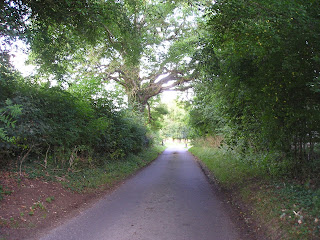Don't Be Put Off By Its Name...
Slaughter may not sound the most promising of names but Lower
Slaughter situated in the heart of the Cotswold Hills is one of the prettiest
and most unspoilt villages you can visit.
Its unusual name is a derivation of the Old English word ‘slough’ meaning
muddy patch but, if it was many years ago, it is certainly not one now. In fact, three years ago it was described in
a poll as having ‘the most romantic street in Britain’.
Although there is some more recent housing discreetly tucked
away most of the buildings date from the mid sixteenth to mid-seventeenth
centuries. Its origins are even older for it was well established even before being
recorded in the Domesday Book; this means that it has been continuously
inhabited for over a thousand years.
+++copyright.jpg)

Many of the oldest houses cluster around the the River Eye
which, although shallow, is powerful enough to feed the undershot waterwheeel
of the mill. This building, which now
houses a small museum, is made from red brick - an unusual building material in
this area – and was working as recently as the the late 1950’s. It is a comparatively modern building having
been built in the 1800’s although a mill was recorded on the site in 1086. The tall chimney was built to give the mill
additional steam power.
A similar tale can be told of the picturesque church with
its tall spire which also dates from the ninteenth century. There are a few traces of the original building
within it: an arcade of four bays dating back to the early 1200’s. The lichen encrusted gravestones in the
churchyard also belie their age for burial rights were only granted in 1770 –
before then villagers were buried in nearby Bourton-on-the-Water.
+++copyright.jpg)
The countryside surrounding Lower Slaughter, and also the village itself, may
not appear to have changed much in centuries but there is no doubt that they
are very much ‘tidier’ than they once were.
An old Pathe News clip shows the banks of the Eye overgrown – there probably
wasn’t the same enthusiasm for cutting its grassy banks when it has to be done
by scythe. Another change the film shows
is the ‘locals’ sitting on the benches: nowadays, many of the houses are owned
by the wealthy as weekend retreats and those exploring its lanes are visitors.
Lower Slaughter, despite its
obvious attraction, has done very little to encourage tourism. It is still possible to sit there or cross
its little stone footbridges or paddle in the ford and be transported back to a
time when life ran at a much slower pace.
It makes a very refreshing place for visitors to recharge the batteries
after the crowds of its larger neighbours, Bourton and Stow-on-the-Wold or, for
us lucky enough to live in the Cotswolds, to do the same after a hard day’s
labour.
Lower Slaughter is just 2½ miles north of
Bourton-on-the-Water and 3 miles west of Stow-on-the-Wold. The Old Mill sells great ice cream!
To see the Pathe News Clip from1939 click here
+++copyright.jpg)

+++copyright.jpg)
+++copyright.jpg)
+++copyright.jpg)
+++copyright.jpg)

Something rather strange has happened to the layout of this page of the blog and I don't seem able to sort it out without deleting the whole post and starting again. It's worked perfectly normally for a few years as far as I know! Hopefully, it's behaving normally on your reader.
ReplyDelete